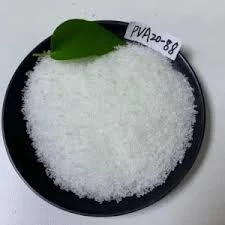Construct Grade HPMC An Overview of Hydroxypropyl Methylcellulose in Modern Applications
Hydroxypropyl Methylcellulose (HPMC) is a versatile cellulose ether that has gained significant traction in various industrial and consumer applications due to its unique properties. From construction to pharmaceuticals, HPMC serves as a crucial component in formulations requiring specific behaviors like thickening, binding, and film-forming. Among its most notable applications is in the construction industry, specifically in creating high-performance materials that meet rigorous standards. This article will explore the construct grade HPMC, its properties, applications, and advantages.
Understanding HPMC
HPMC is derived from natural cellulose fibers, modified to enhance its water solubility and functional properties. The various grades of HPMC have different levels of hydroxypropyl and methoxy substitutions, affecting viscosity, gel formation, and other critical characteristics. Construct grade HPMC typically boasts higher viscosity and binding capabilities, making it particularly beneficial in construction-related applications.
Properties of Construct Grade HPMC
1. Water Retention One of the standout properties of construct grade HPMC is its ability to retain water. This quality is crucial in construction materials such as mortars, plasters, and tile adhesives, as it ensures the necessary hydration for cement or gypsum to achieve optimal curing and strength.
2. Rheology Modifier HPMC acts as an effective rheology modifier, providing a suitable viscosity for various construction materials. This ensures that mixtures maintain workable consistency while being easy to apply and manipulate.
3. Adhesive Properties The binding capabilities of construct grade HPMC contribute to the adhesive nature of products like tile adhesives and joint compounds. This is instrumental in ensuring that materials adhere correctly to surfaces, providing durability and stability.
4. Film-Forming HPMC can form a smooth, flexible film, enhancing the surface quality of finished products. This property is particularly advantageous in applications where aesthetic and functional surface characteristics are imperative.
Applications in Construction
Construct grade HPMC is predominantly used in the formulation of the following materials
1. Cement-Based Products In the production of cementitious pastes and mortars, HPMC acts to improve adhesion and workability while also extending the open time for application—a vital feature for large-scale construction projects where coordination and timing are essential.
construct grade hpmc

2. Dry Mix Mortars HPMC is a key ingredient in dry mix mortars, enhancing their properties to ensure consistent performance during mixing, application, and setting. Its water retention capabilities allow for better hydration of the mortar, leading to improved physical strength after curing.
3. Tile Adhesives The use of construct grade HPMC in tile adhesives significantly improves their bonding strength, enhancing overall performance. The ability to control viscosity ensures an easy spread and placement of tiles, even in challenging conditions.
4. Gaskets and Sealants HPMC contributes to the formulation of gaskets and sealants, providing the necessary properties for flexibility and adherence while preventing leakage in various constructions.
Advantages of Using HPMC in Construction
The use of construct grade HPMC in construction applications offers numerous benefits
1. Enhanced Workability By improving the consistency and application properties of construction materials, HPMC ensures that workers can handle products more easily, leading to better application techniques and overall results.
2. Improved Strength and Durability The adhesive properties of HPMC contribute to the longevity of applied materials, making structures safer and more durable over time.
3. Versatility HPMC can be adapted for various formulations across different construction products, making it a flexible choice for manufacturers seeking to enhance their product offerings.
4. Sustainability As a cellulose-based product, HPMC aligns well with contemporary trends focusing on sustainability in construction materials, offering an eco-friendlier alternative to synthetic polymers.
Conclusion
Construct grade Hydroxypropyl Methylcellulose is a game-changer in the construction industry, offering enhanced performance and versatility in a variety of applications. Its unique properties not only improve the workability and durability of construction materials but also advance the push for sustainable building practices. As the construction industry continues to evolve, the significance of HPMC and its role in developing high-performance materials will undoubtedly remain crucial. By embracing innovative solutions like construct grade HPMC, we can look forward to advancements that elevate construction standards for future generations.
-
Rdp Powder: Key Considerations for Wholesalers in the Building Materials IndustryNewsJul.08,2025
-
Key Considerations for Wholesalers: Navigating the World of Hpmc - Based ProductsNewsJul.08,2025
-
Hpmc Detergent: Key Considerations for WholesalersNewsJul.08,2025
-
Key Considerations for Wholesalers: China Hpmc For Tile Adhesive, Coating Additives, Concrete Additives, and MoreNewsJul.08,2025
-
Crucial Considerations for Wholesalers: Navigating the World of Construction MaterialsNewsJul.08,2025
-
Key Considerations for Wholesalers Sourcing Additive For Cement, Additive For Concrete, Additive For Putty from Additive Manufacturer Shijiazhuang Gaocheng District Yongfeng Cellulose Co., Ltd.NewsJul.08,2025




